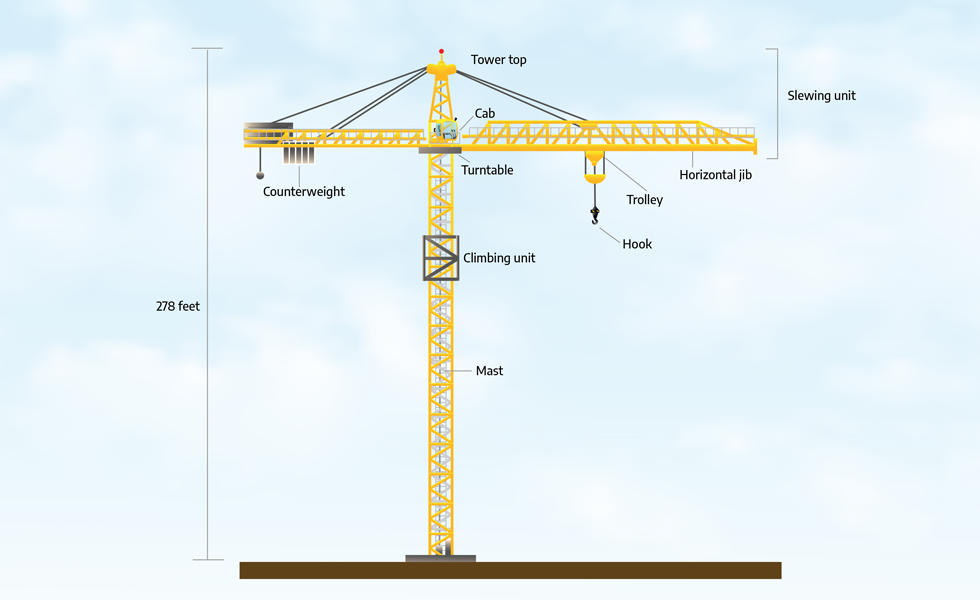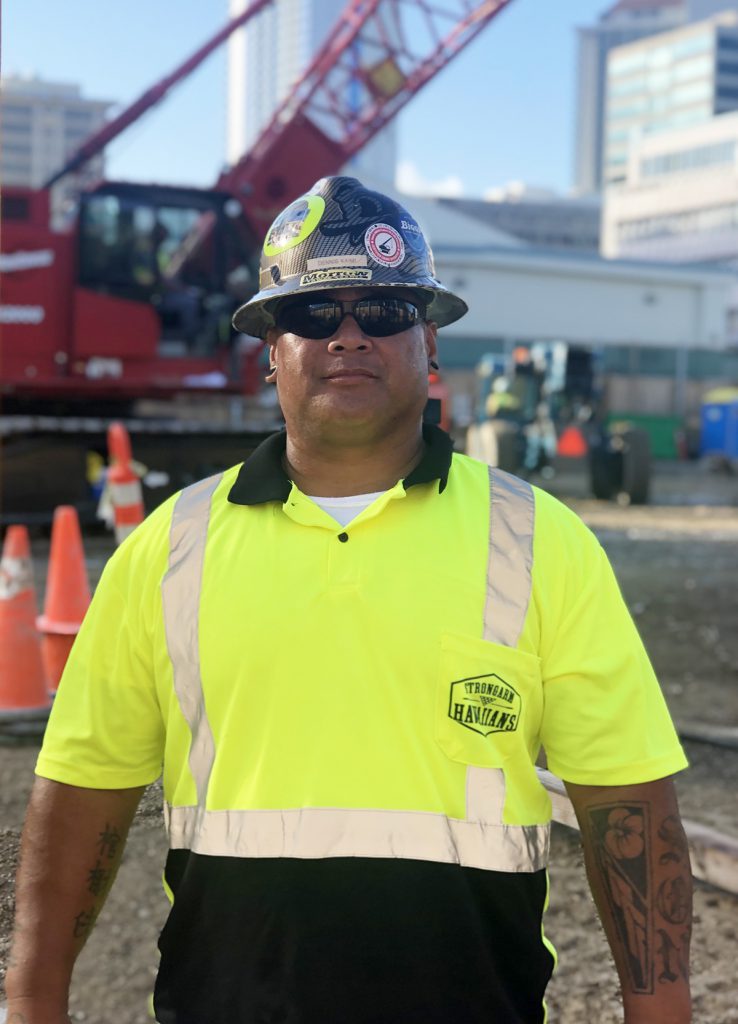
When constructing a high-rise tower, one of the most significant milestones is the erection of the tower crane. While there is a huge amount of work to prepare the building’s foundation for construction, the onset of the crane marks the exciting start of the tower going vertical.
Azure’s own tower crane will be erected next week, requiring a crew of 12 people and three days of work, Monday through Wednesday. Once assembled, the massive crane will be able to lift up to 24 tons at a time (the weight of a typical school bus) and is perhaps the most significant piece of equipment on the construction site. Read on to learn more . . .
1. The concrete foundation of the crane is built in the weeks prior to the erection of the crane itself. The base weighs approximately 130 tons and sits atop four auger cast piles drilled approximately 30-feet into the ground.
2. Led by police escorts, the oversized sections of the crane arrive at the construction site on approximately 20 tractor-trailer rigs.
3. The tower of the crane is comprised of a series of vertical mast sections, which are placed one on top of the other by a separate mobile crane. At Azure, each section weighs up to 26,000 lbs.
4. After the sections are set, the top climbing unit is installed. This special section of the crane will allow it to rise as the tower is constructed.
5. Next, the slewing unit is assembled and attached to the mast. The various parts of the slewing unit allow the crane to rotate and lift. These include:
· Turntable – This allows the crane to rotate
· Horizontal jib – The “working arm” of the crane
· Counterweight – A balancing force for the horizontal jib
· Cab – Where the crane operator sits
· Tower top – Placed above the cab, this section is where the cables that provide stability to the crane radiate from
6. As mentioned earlier, the top climbing unit, initially attached to the top-most mast, is required for the crane to rise in height. Once the initial assembly of the mast reaches a height that the mobile crane can no longer reach, the crew will begin using the crane itself to continue the assembly of additional mast sections to reach the required height.
7. To begin this process, the recently installed mast is now disconnected from the slewing unit. Using the internal hydraulic jack, the climbing unit is able to lift both itself and the slewing unit. The climbing unit is set between the slewing unit and the top mast.
8. The trolley on the horizontal jib then grabs a new mast section and inserts it into the climbing unit.
9. Once this new mast section is secured, the process is repeated until the crane reaches the desired initial height of 278 feet.
10. As the tower is constructed, the height of the crane will be increased two more times to a final height of 507 feet!
 Meet Azure’s Crane Operator
Meet Azure’s Crane Operator
We can’t talk about the tower crane without giving mention to the man behind the controls. Meet Dennis Kaimi, a veteran in the construction industry and Azure Ala Moana’s expert Crane Operator.
Q: How long have you been working as a Crane Operator?
A: I’ve been doing this for over 25 years.
Q: What is the best and most difficult parts about your job?
A: The best part for me is seeing the entire project, from the beginning to the end, happen in a safe and timely manner. The toughest part is getting the loads from point A to point B safely.
Q: I also heard it’s tough climbing up to the cab…
A: That’s the second hardest part of the job – getting up there! It takes some time getting used to. The mast sways and bobs while you’re climbing up hundreds of feet, just like a fishing pole.
Q: What makes a great Crane Operator?
A: It takes training. There’s a lot of skill and finesse that goes into it. And most of all, great communication with the Riggers. They are the eyes and ears when the Crane Operator can’t see or hear – connecting and disconnecting the loads from the crane hook and guiding the Operator to where the loads need to be picked up and placed.
Q: Is there anything you like about this project in particular?
A: The new technology. Every time we work on a new project, I’m excited to see the new design and technology that the architects come up with. I also think this is a great location – it’s very convenient for the people who are going to live here.